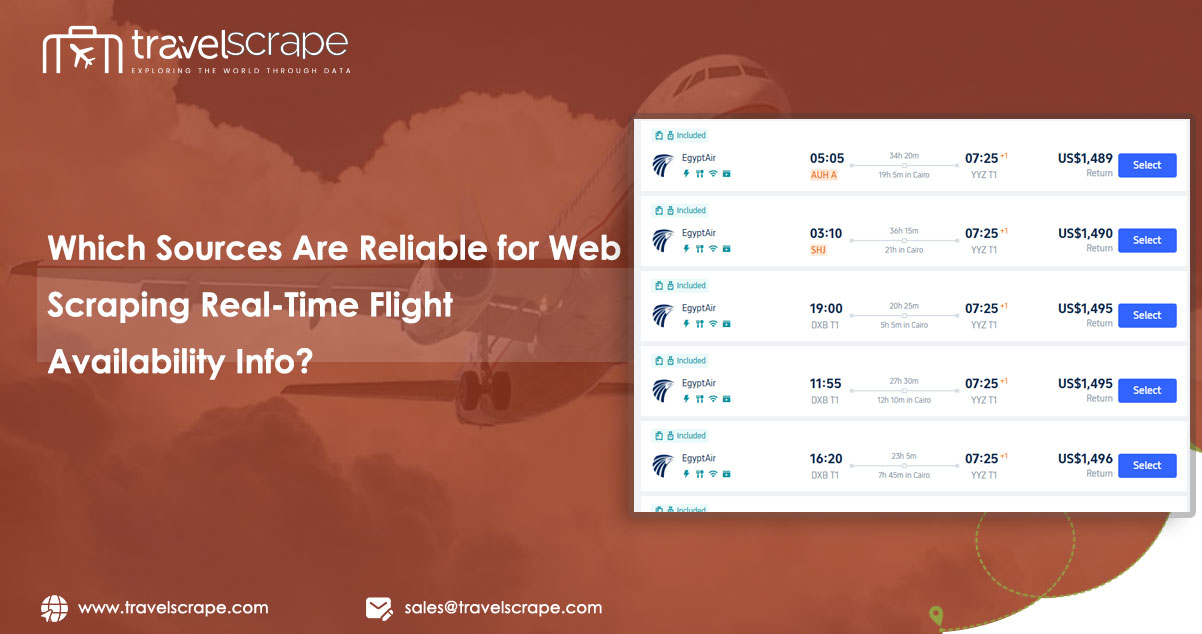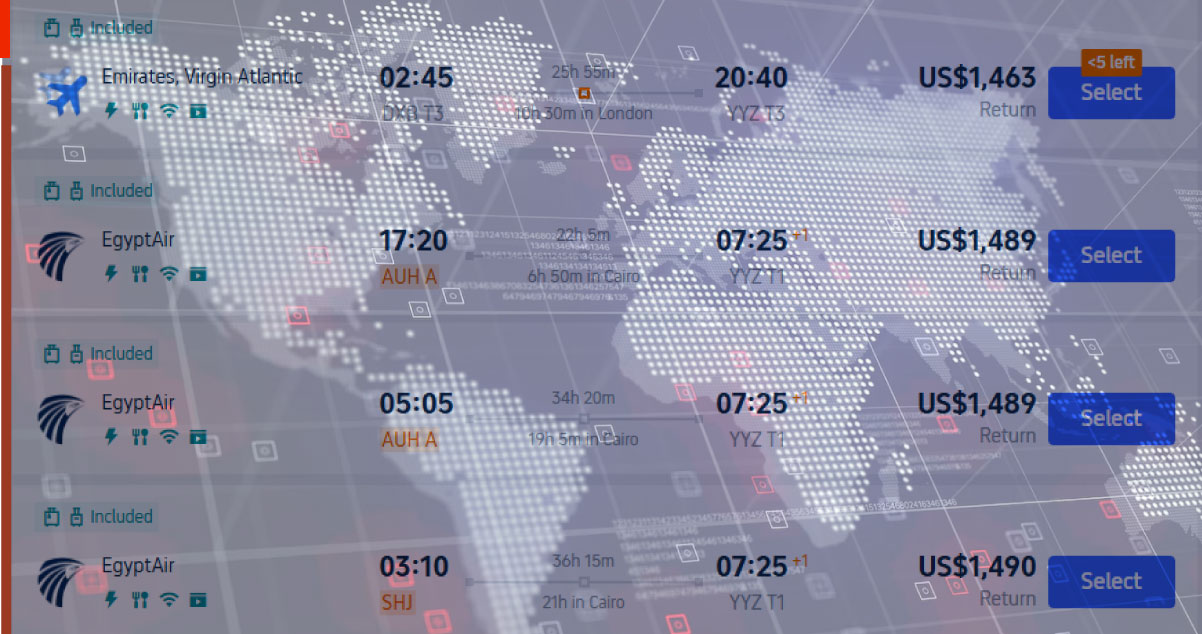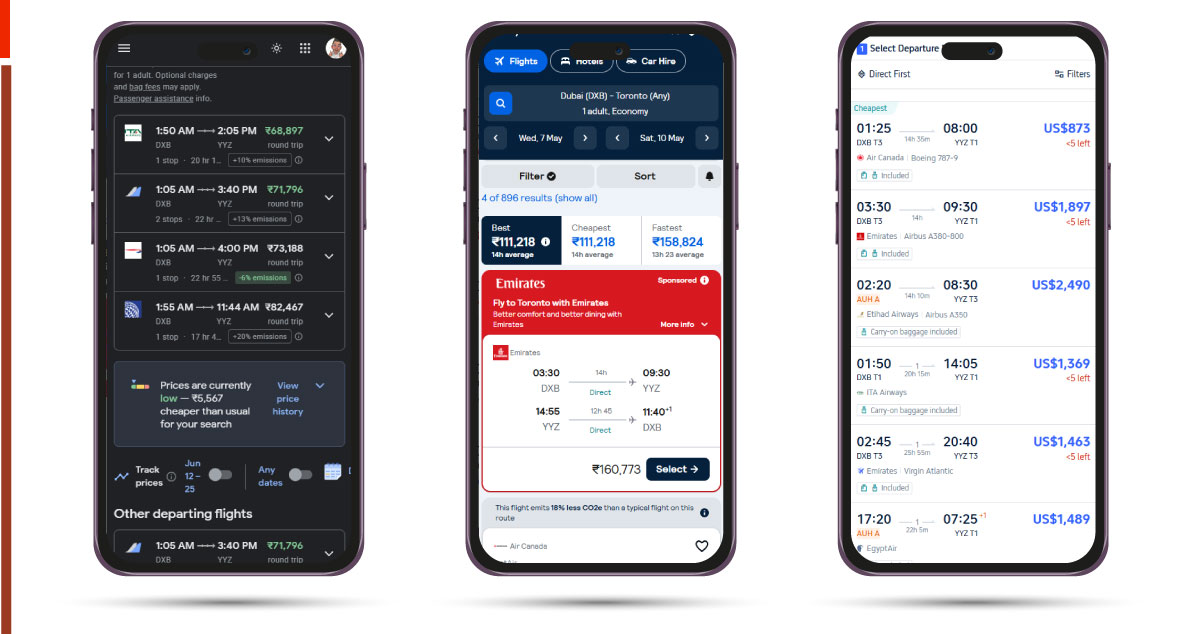Which Sources Are Reliable for Web Scraping Real-Time Flight Availability Info?

Introduction
In today's data-driven travel industry, accessing accurate and up-to-date flight information has become essential for businesses looking to provide competitive services. Web Scraping Real-Time Flight Availability has emerged as a crucial technique for travel agencies, fare comparison websites, and booking engines to stay ahead in this fast-paced market. However, identifying reliable sources for flight data extraction presents significant challenges due to technical barriers, legal considerations, and the dynamic nature of airfare information.
Navigating the Flight Data Ecosystem

To effectively harness Live Airline Data Scraping, it’s essential first to grasp the broader landscape of flight data distribution. Key players such as airlines, Global Distribution Systems (GDSs), Online Travel Agencies (OTAs), and metasearch platforms each contribute uniquely to flight availability and pricing information flow.
Understanding these roles helps identify the most relevant and reliable data sources for your needs.
Strategic Importance of Real-Time Flight Data
Real-time flight data delivers significant strategic and operational benefits to a wide array of travel stakeholders:
- Travel agencies benefit from up-to-the-minute flight availability, helping avoid failed bookings and enhancing customer satisfaction.
- Fare alert services can send prompt notifications about fare fluctuations, increasing user engagement and conversion rates.
- Travel analytics firms rely on historical and real-time pricing trends to fine-tune forecasting models and deliver actionable insights.
- Corporate travel management teams leverage live pricing data to identify cost-effective booking windows and reduce overall travel spend.
Integrating Live Airline Data Scraping into your operations allows you to tap into these advantages. However, the key to maximizing its impact lies in selecting the right mix of data sources tailored to your business objectives.
Official Airline Sources
Official airline sources remain the gold standard for obtaining accurate and reliable flight data. However, the ability to access this data, especially through automation, varies significantly depending on the platform.
1. Airline Websites
Airline Websites serve as primary booking portals and typically host the most current data regarding seat availability, ticket prices, and onboard services. Designed primarily for human interaction, these platforms often present considerable hurdles for those looking to automate data extraction or conduct web scraping for real-time flight data.
Advantages of Airline Websites
- Access to real-time flight availability and official fare data.
- Unfiltered pricing without third-party adjustments or commissions.
- Rich information on in-flight amenities, baggage rules, and airline policies.
Challenges to Consider
- Use of dynamic JavaScript content that complicates scraping.
- Implementation of sophisticated anti-bot protections and captchas.
- Constantly evolving site architectures that demand regular scraper maintenance.
- Potential legal limitations surrounding automated data collection.
2. Airline APIs
Some airlines provide Travel Scraping APIs, granting developers structured and secure access to flight information. These interfaces are typically available under specific terms and are designed to facilitate seamless integration for authorized partners.
Key Considerations for Airline APIs:
- Level of access: Generally limited to those entering formal partnership agreements with the airline.
- Cost structure: Access often comes with substantial fees or requires a revenue-sharing arrangement.
- Integration complexity: This varies greatly depending on the airline’s technical infrastructure and policies.
While Airline APIs offer a legitimate method for accessing flight data, the diversity in access policies and technical requirements across carriers makes it challenging to Scrape Airline Data From Multiple Platforms through official means alone.
Third-Party Data Aggregators

Third-party data Aggregators refer to platforms that compile and distribute data—such as flight schedules and fares—from multiple airlines or travel service providers, enabling centralized access to broad travel inventory.
1. Global Distribution Systems (GDSs)
GDSs such as Amadeus, Sabre, and Travelport are centralized hubs for airline flight inventory data. These systems are foundational to the travel industry's infrastructure and offer broad global coverage.
Access methods include:
- Direct integration through official API partnerships typically requires formal contractual agreements and compliance with strict usage terms.
- Travel agency-specific portals and specialized access interfaces are often designed for accredited travel resellers.
- Content aggregation services that leverage the underlying GDS infrastructure to deliver flight data in custom formats.
While the Global Flight Schedule Dataset offered through these systems ensures broad and structured coverage, it is often gated behind high licensing fees and significant technical or contractual hurdles.
2. OTA and Metasearch Platforms
Platforms like Expedia, Booking.com, Kayak, and Skyscanner serve as leading OTAs and Metasearch Platforms. They aggregate flight details from various airlines and distributors into a user-facing search interface.
Key data characteristics include:
- Pre-aggregated Information: Data is collected and consolidated from multiple airlines, presenting a unified set of results.
- Codeshare and Interline Agreements: These include flights from different airlines with partnership agreements, allowing for broader coverage of routes.
- Exclusive Pricing: Some platforms feature special airline pricing arrangements, offering unique fare structures unavailable elsewhere.
While these platforms offer rich data, they are also equipped with robust anti-scraping measures, which can make the technical process of Fare Availability Data Extraction significantly more complex.
Specialized Flight Data Services

Specialized Flight Data Services are advanced solutions that provide businesses with valuable, real-time, structured flight-related information. These services empower businesses to efficiently extract, analyze, and leverage flight data for various applications, from pricing intelligence to route optimization.
1. Flight Data APIs
Several specialized providers offer Flight Data APIs as a core service for companies looking to integrate comprehensive flight information into their platforms:
- FlightAPI: Delivers various search functionalities, including real-time flight pricing across numerous airlines.
- Skyscanner API: Facilitates fare comparison from various flight providers, enabling users to find the best deals.
- Kiwi.com API: This API provides flexible search options, allowing businesses to customize searches with unique routing options for more tailored results.
These Flight Data APIs often come with tiered pricing models based on request volume, making them a scalable option suitable for businesses of all sizes seeking Flight Price Data Intelligence.
2. Data Marketplaces
Emerging data marketplaces offer a centralized platform for accessing structured flight information without the need for custom scraping solutions:
- Rapid API: A unified marketplace that hosts multiple flight data providers, giving users access to diverse flight-related datasets.
- AeroDataBox: Specializes in aircraft data and flight status information, making it a valuable resource for aviation-related insights.
- AWS Data Exchange: Provides select aviation datasets sourced from reputable industry providers, streamlining access to important aviation data.
These data marketplaces offer an easier way to access critical datasets like the Global Flight Price Trends Datase , reducing the complexity of direct scraping efforts.
By utilizing these advanced services, businesses can effortlessly integrate flight-related data into their operations, enabling better decision-making and more informed strategies.
Technical Considerations for Flight Data Extraction

Technical considerations for flight data extraction refer to the complex strategies and challenges involved in collecting and parsing real-time flight information from websites, overcoming various anti-scraping measures, and handling data inconsistencies.
-
Overcoming Anti-Scraping Measures:
Modern flight booking websites are equipped with various anti-scraping defenses, including IP blocking, rate limiting, CAPTCHA challenges, and browser fingerprinting to detect automated scraping. Additionally, dynamic content loading complicates data extraction.
Advanced techniques are necessary to effectively perform web scraping for real-time flight data. Rotating proxies distribute requests across multiple IPs, while headless browsers mimic human behavior to bypass fingerprinting. Intelligent session management and request timing prevent triggering rate limits. Constant adaptation to site structure changes is crucial, as travel sites frequently update to block scraping.
-
Data Parsing Challenges:
Flight data extraction faces several complex challenges, primarily due to inconsistent data formats and dynamic JavaScript rendering. Pricing and availability often load asynchronously, requiring custom parsing strategies for each source.
Booking sites also feature mixed content types, with fare information combined with images and interactive elements. These hurdles make Live Airline Data Scraping a highly specialized skill requiring ongoing monitoring and maintenance to ensure data accuracy and integrity.
Building a Sustainable Flight Data Strategy
A sustainable flight data strategy involves creating a robust and adaptable framework for continuously collecting, processing, and utilizing real-time flight information. To implement a successful strategy, businesses must ensure they have the proper technical infrastructure, maintenance practices, and resource planning to handle the complexities of real-time data scraping.
1. Technical Infrastructure Requirements
Implementing web scraping for real-time flight data mandates a solid and scalable technical foundation. A well-planned infrastructure is essential for seamless operation and ensures reliable data extraction at all times.
Critical components include:
- Distributed Proxy Networks: These networks allow reliable, anonymous access to flight data sources while circumventing potential geo-restrictions or rate-limiting issues.
- Scalable Processing Capacity: Flight data scraping requires the ability to scale computing resources based on the volume of data and frequency of updates, ensuring timely extraction.
- Resilient Storage Solutions: Secure and durable storage systems are critical for archiving the large volume of flight data, enabling fast retrieval and processing as needed.
- Monitoring and Alerting Systems: These systems continuously track scraper performance, data quality, and error detection, ensuring that disruptions are promptly addressed.
2. Maintenance Considerations
Flight data sources are not static; they evolve continuously. Ongoing maintenance is essential to maintaining the data's accuracy and relevance.
This includes:
- Regular Scraper Updates: As flight data platforms frequently update their structure, scrapers must be updated periodically to maintain accurate data extraction.
- Pattern Recognition for Structure Changes: Advanced algorithms can detect changes in website structures, allowing scrapers to adapt without manual intervention.
- Fallback Solutions for Source Failures: When a data source is temporarily unavailable, fallback systems ensure continued data collection from alternative sources, minimizing disruptions.
3. Resource Planning
Running a successful flight data acquisition program involves more than technical infrastructure—it also requires careful planning of human resources.
Key requirements for success include:
- Specialized Development Expertise: Skilled developers with experience in web scraping and handling complex flight data sources are essential for the initial setup and ongoing adjustments.
- Ongoing Monitoring Personnel: Dedicated team members should be in place to monitor the scraping system and address any issues as they arise, ensuring continuous and accurate data collection.
- Legal Guidance for Compliance: Various legal regulations govern data scraping and privacy, so legal experts are needed to ensure that the process remains compliant with relevant laws and guidelines.
Given these resource requirements, many businesses opt for third-party Airline Data Scraping Services, as they provide a scalable, efficient, and legally compliant solution without the overhead of in-house development.
How Travel Scrape Can Help You?
We recognize the intricate nature of Web Scraping Real-Time Flight availability and are committed to offering specialized solutions that address the unique challenges businesses encounter in this field.
Our Airline Data Scraping Services blend deep technical proficiency with a strong understanding of industry-specific needs to provide trustworthy flight data through fully compliant methods.
Our comprehensive approach includes:
- Tailored Scraping Infrastructure: We create custom scraping solutions designed specifically for your data needs, ensuring optimal extraction from the right sources.
- Legally Compliant Methodologies: We adhere to established legal frameworks, ensuring that all data is accessed ethically and complies with relevant laws.
- Data Normalization: Our process standardizes data from various formats, converting it into consistent, structured, easy-to-use, and analyzed outputs.
- Real-time Monitoring: We maintain continuous data flow by adapting to changes in data sources, ensuring you always have access to up-to-date flight information.
- Scalable Architecture: Our solutions are built to handle high-demand periods without compromising performance, ensuring you can rely on us for data during peak times.
Additionally, our Travel Scraping API provides seamless access to a comprehensive flight data ecosystem, allowing you to bypass the complexities of setting up your scraping infrastructure while gaining valuable insights.
Conclusion
Navigating the complexities of Web Scraping Real-Time Flight Availability requires balancing technical capabilities, legal considerations, and business needs. The most effective strategies combine data from multiple sources, optimizing strengths while addressing limitations.
Travel Industry Web Scraping becomes increasingly vital for staying competitive as the travel industry evolves. Businesses must decide whether to build in-house solutions or partner with specialized providers like Travel Scrape to unlock the flight data intelligence needed for success.
Established Travel Aggregators and specialized data services offer valuable alternatives to direct scraping methods for those seeking reliable flight data without the implementation hassle.
Don't let technical and legal challenges limit your service offerings. Contact Travel Scrape today to learn how our specialized flight data solutions can enhance your access to real-time availability and pricing insights.
.webp)
.webp)